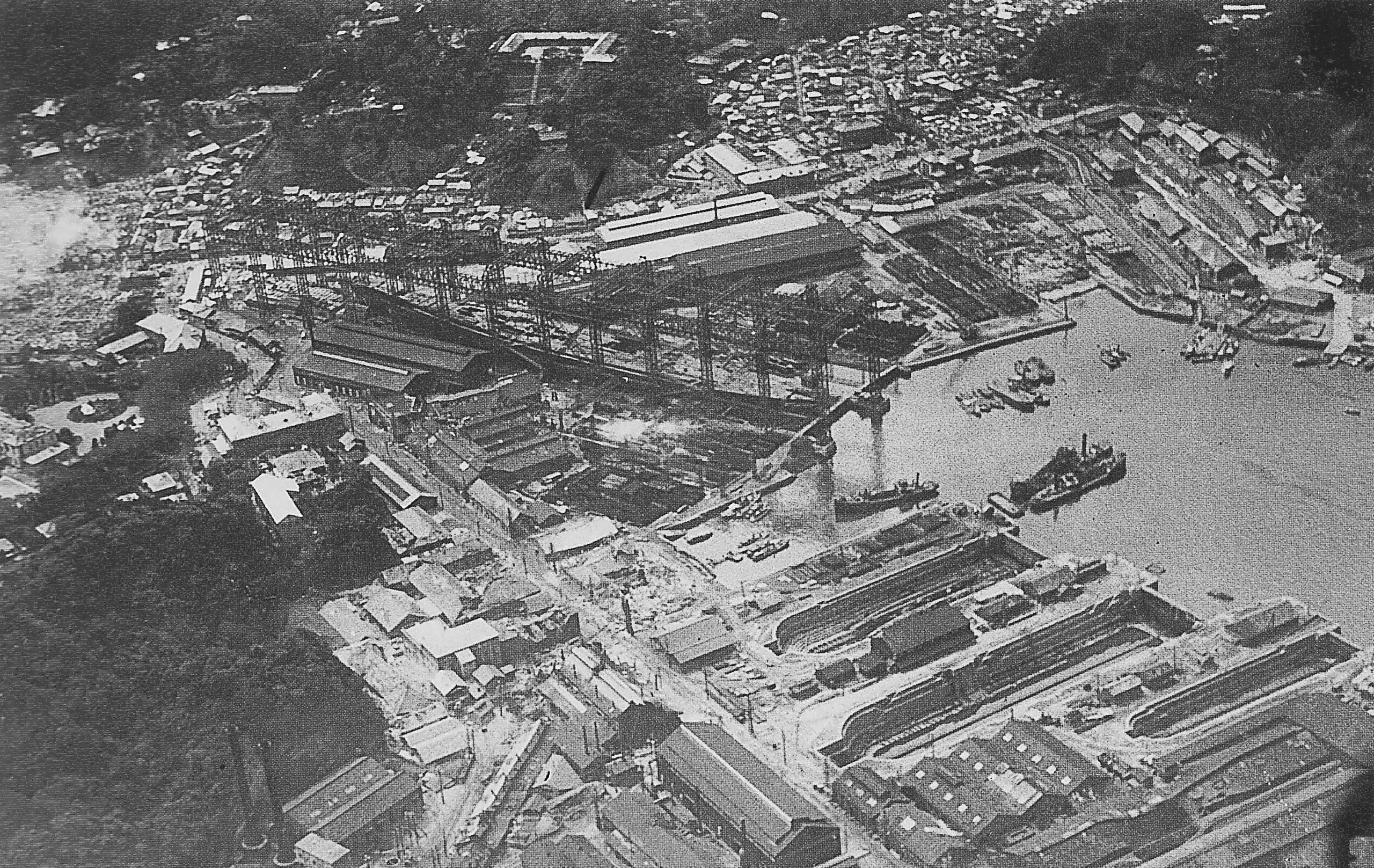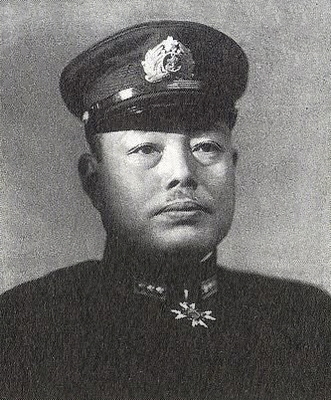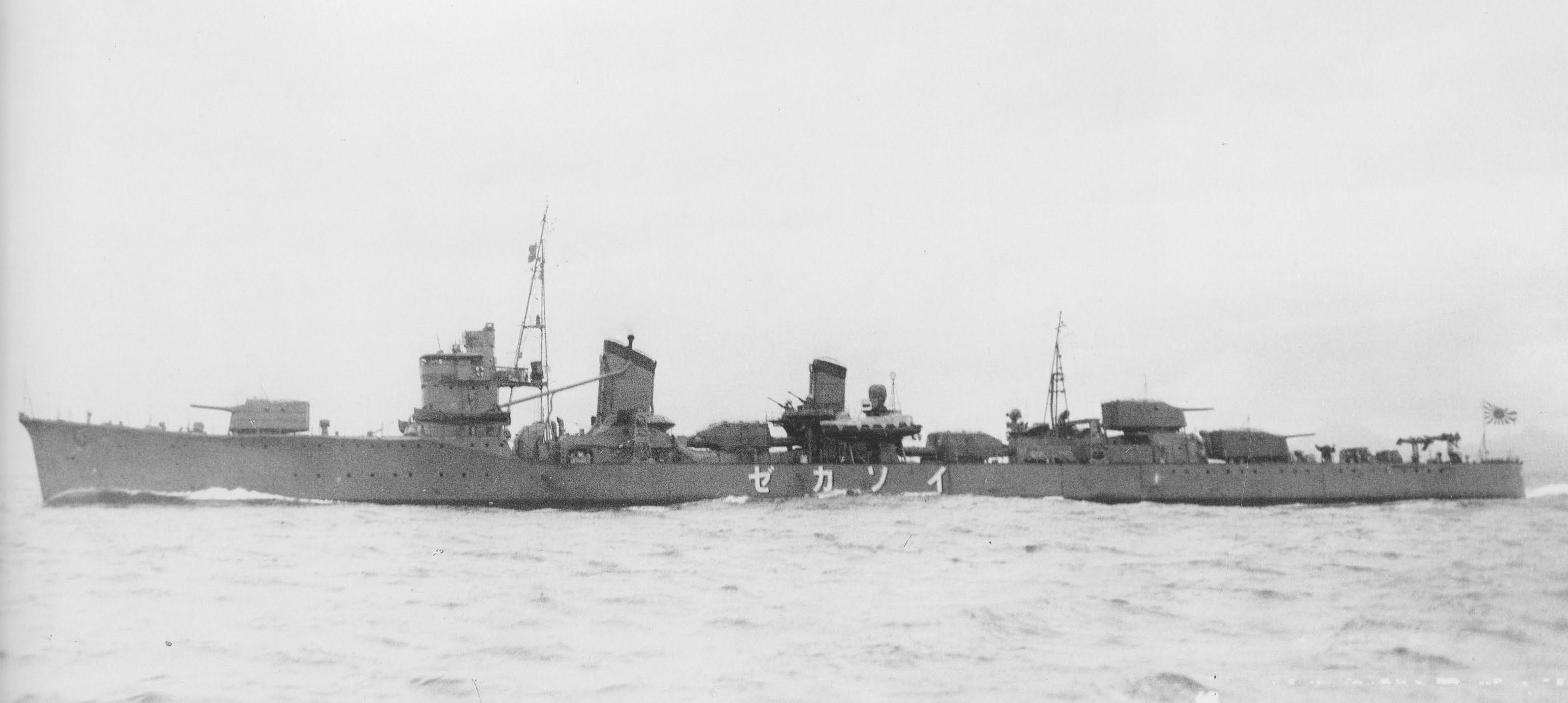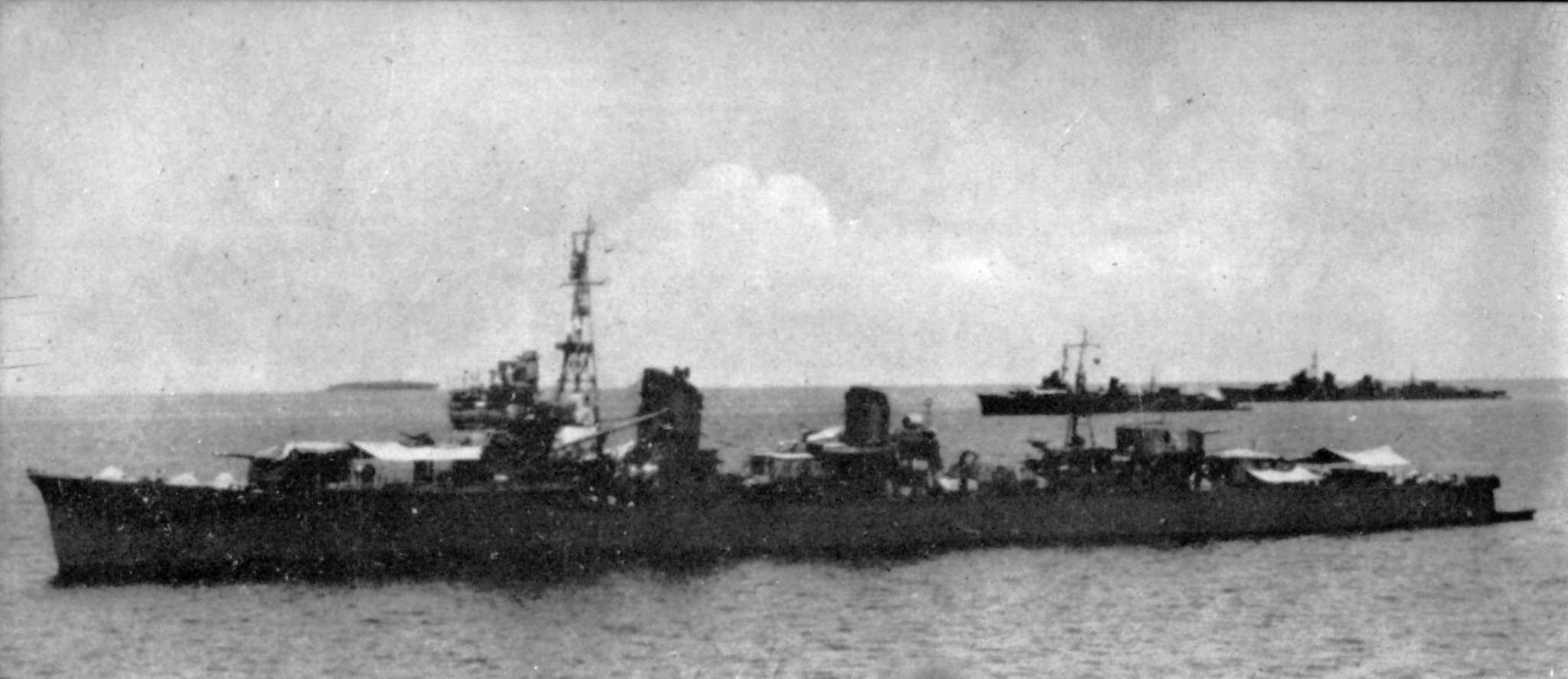|
Japanese Auxiliary Submarine Chaser No.241
''Cha-241'' or ''No. 241'' (''Japanese'': 第二百四十一號驅潜特務艇) was a No.1-class auxiliary submarine chaser of the Imperial Japanese Navy that served during World War II. History She was laid down on 1 April 1944 at the Yokosuka shipyard of Koyanagi Shipyard Co., Ltd. (株式會社小柳造船所) and launched on 19 September 1944. She was completed and commissioned on 22 October 1944; fitted with armaments at the Yokosuka Naval Arsenal; and assigned to the Kii Defense Force, Osaka Guard District under Ensign Koji Matsumoto. On 29 November 1944, ''Cha-241'' joined the destroyers ''Hamakaze'', ''Yukikaze'', and ''Isokaze'' who were escorting the carrier ''Shinano'' en route from Yokosuka for Kure when the carrier was torpedoed and sunk by the US submarine at . ''Cha-241'' survived the war. On 1 December 1945, she was demobilized and enrolled as a minesweeper by the occupation forces. On 1 January 1947, she was assigned to the Japan Maritime Safety Agency and ... [...More Info...] [...Related Items...] OR: [Wikipedia] [Google] [Baidu] |
Imperial Japanese Navy
The Imperial Japanese Navy (IJN; Kyūjitai: Shinjitai: ' 'Navy of the Greater Japanese Empire', or ''Nippon Kaigun'', 'Japanese Navy') was the navy of the Empire of Japan from 1868 to 1945, when it was dissolved following Japan's surrender in World War II. The Japan Maritime Self-Defense Force (JMSDF) was formed between 1952–1954 after the dissolution of the IJN. The Imperial Japanese Navy was the third largest navy in the world by 1920, behind the Royal Navy and the United States Navy (USN). It was supported by the Imperial Japanese Navy Air Service for aircraft and airstrike operation from the fleet. It was the primary opponent of the Western Allies in the Pacific War. The origins of the Imperial Japanese Navy go back to early interactions with nations on the Asian continent, beginning in the early medieval period and reaching a peak of activity during the 16th and 17th centuries at a time of cultural exchange with European powers during the Age of Discovery. After ... [...More Info...] [...Related Items...] OR: [Wikipedia] [Google] [Baidu] |
Yokosuka Naval Arsenal
was one of four principal naval shipyards owned and operated by the Imperial Japanese Navy, and was located at Yokosuka, Kanagawa prefecture on Tokyo Bay, south of Yokohama. History In 1866, the Tokugawa shogunate government established the ''Yokosuka Seisakusho'', a military arsenal and naval base, with the help of foreign engineers, including the French naval architect Léonce Verny. The new facility was intended to produce modern, western-style warships and equipment for the Tokugawa navy. The construction of the arsenal was an important first step for the modernization of Japan's industry. Modern buildings, an aqueduct, foundry, brick factories, technical schools to train Japanese technicians were established. After the Boshin War and the Meiji Restoration, the new Meiji government took over control of the facility in 1871, renaming it the ''Yokosuka Zosenjo'' (Yokosuka Shipyards). The first dry dock was opened in 1871, and is still in operation today. Japan's first ... [...More Info...] [...Related Items...] OR: [Wikipedia] [Google] [Baidu] |
Kure
is a port and major shipbuilding city situated on the Seto Inland Sea in Hiroshima Prefecture, Japan. With a strong industrial and naval heritage, Kure hosts the second-oldest naval dockyard in Japan and remains an important base for the Japan Maritime Self-Defence Force (JMSDF) named, JMSDF Kure Naval Base. , the city has an estimated population of 228,030 and a population density of 646 persons per km2. The total area is 352.80 km2. History The Kure Naval District was first established in 1889, leading to the construction of the Kure Naval Arsenal and the rapid growth of steel production and shipbuilding in the city. Kure was formally incorporated on October 1, 1902. From 1889 until the end of World War II, the city served as the headquarters of the Kure Naval District. Kure dockyards recorded a number of significant engineering firsts including the launching of the first major domestically built capital ship, the battlecruiser '' Tsukuba'' (1905) and the launch ... [...More Info...] [...Related Items...] OR: [Wikipedia] [Google] [Baidu] |
Japanese Aircraft Carrier Shinano
was an aircraft carrier built by the Imperial Japanese Navy (IJN) during World War II, the largest such built up to that time. Laid down in May 1940 as the third of the s, ''Shinano''s partially complete hull was ordered to be converted to an aircraft carrier following Japan's disastrous loss of four of its original six fleet carriers at the Battle of Midway in mid-1942. The advanced state of her construction prevented her conversion into a fleet carrier, so the IJN decided to convert her into a carrier that supported other carriers. Her conversion was still not finished in November 1944 when she was ordered to sail from the Yokosuka Naval Arsenal to Kure Naval Base to complete fitting out and transfer a load of 50 Yokosuka MXY7 ''Ohka'' rocket-propelled ''kamikaze'' flying bombs. She was sunk en route, 10 days after commissioning, on 29 November 1944, by four torpedoes from the U.S. Navy submarine . Over a thousand sailors and civilians were rescued and 1,435 were lost, inc ... [...More Info...] [...Related Items...] OR: [Wikipedia] [Google] [Baidu] |
Japanese Destroyer Isokaze (1939)
''Isokaze'' was one of 19 s built for the Imperial Japanese Navy during the 1930s. Design and description The ''Kagerō'' class was an enlarged and improved version of the preceding . Their crew numbered 240 officers and enlisted men. The ships measured overall, with a beam of and a draft of .Chesneau, p. 194 They displaced at standard load and at deep load.Whitley, pp. 200–01 The ships had two Kampon geared steam turbines, each driving one propeller shaft, using steam provided by three Kampon water-tube boilers. The turbines were rated at a total of for a designed speed of . The ships had a range of at a speed of .Jentschura, Jung & Mickel, p. 148 The main armament of the ''Kagerō'' class consisted of six Type 3 guns in three twin-gun turrets, one superfiring pair aft and one turret forward of the superstructure. They were built with four Type 96 anti-aircraft guns in two twin-gun mounts, but more of these guns were added over the course of the war. The ships ... [...More Info...] [...Related Items...] OR: [Wikipedia] [Google] [Baidu] |
Japanese Destroyer Yukikaze (1939)
was a in service with the Imperial Japanese Navy during World War II. She was the only member of her class to survive the war, and did so without suffering any major damage. Following the war, the ship was transferred to the Republic of China Navy, where she was renamed ''Dan Yang'' ( DD-12) and served until 1966, before being scrapped in 1970. Design and description The ''Kagerō'' class was an enlarged and improved version of the preceding of destroyers. Their crew numbered 240 officers and enlisted men. The ships measured overall, with a beam of and a draft of . They displaced at standard load and at deep load.Whitley, pp. 200–01 The ships had two Kampon geared steam turbines, each driving one propeller shaft, using steam provided by three Kampon water-tube boilers. The turbines were rated at a total of for a designed speed of . The ships had a range of at a speed of .Jentschura, Jung & Mickel, p. 148 The main armament of the ''Kagerō'' class consisted of six T ... [...More Info...] [...Related Items...] OR: [Wikipedia] [Google] [Baidu] |
Japanese Destroyer Hamakaze (1940)
was one of 19 s built for the Imperial Japanese Navy during the 1930s. Design and description The ''Kagerō'' class was an enlarged and improved version of the preceding . Their crew numbered 240 officers and enlisted men. The ships measured overall, with a beam of and a draft of .Chesneau, p. 194 They displaced at standard load and at deep load.Whitley, pp. 200–01 The ships had two Kampon geared steam turbines, each driving one propeller shaft, using steam provided by three Kampon water-tube boilers. The turbines were rated at a total of for a designed speed of . The ships had a range of at a speed of .Jentschura, Jung & Mickel, p. 148 The main armament of the ''Kagerō'' class consisted of six Type 3 guns in three twin-gun turrets, one superfiring pair aft and one turret forward of the superstructure. They were built with four Type 96 anti-aircraft guns in two twin-gun mounts, but more of these guns were added over the course of the war. The ships were also ar ... [...More Info...] [...Related Items...] OR: [Wikipedia] [Google] [Baidu] |
Osaka Guard District
The was a major navy base for the Imperial Japanese Navy in central Japan during World War II. Located at Osaka ), Osaka Guard District was responsible for guarding the approach to the old capital of Kyoto, the Kansai industrial zone, port of Kobe and the Inland Sea of Japan. History The were considered second tier naval bases, similar to the first tier , with docking, fueling and resupply facilities, but typically lacked a shipyard or training school. They tended to be established by strategic waterways or major port cities for defensive purposes. In concept, the Guard District was similar to the United States Navy Sea Frontiers concept. the Guard District maintained a small garrison force of ships and Naval Land Forces which reported directly to the Guard District commander, and hosted detachments of the numbered fleets on a temporary assignment basis. Osaka, a strategic port city and location of several shipyards was initially ranked as a third echelon naval port or report ... [...More Info...] [...Related Items...] OR: [Wikipedia] [Google] [Baidu] |
Kii Ōshima
is an inhabited island lying off the southern tip of the Kii Peninsula and the southernmost point of Honshū, Japan. It has an estimated population of around 2000, and is administratively part of the town of Kushimoto in Wakayama Prefecture. The island is approximately in length from east-to-west by north-to-south. Geography Kii Ōshima is located approximately one kilometer to the east of Cape Shionomisaki and the island of Myogajima, and 1.8 kilometers from mainland Honshu. It has an intricate ria coastline are is noted for sea cliffs on all sides except for its western end. Cape Kashinozaki extends from the eastern end of the island, and is surrounded by semi-submerged reefs and rocks. The island has a circumference of and an area of The Kuroshio Current surrounds the island, forming a fertile fishing ground, and approximately 60% of the interior of the island is cultivated. There are several hamlets, located in the south of the island. The island is connected to mainland ... [...More Info...] [...Related Items...] OR: [Wikipedia] [Google] [Baidu] |
World War II
World War II or the Second World War, often abbreviated as WWII or WW2, was a world war that lasted from 1939 to 1945. It involved the World War II by country, vast majority of the world's countries—including all of the great powers—forming two opposing military alliances: the Allies of World War II, Allies and the Axis powers. World War II was a total war that directly involved more than 100 million Military personnel, personnel from more than 30 countries. The major participants in the war threw their entire economic, industrial, and scientific capabilities behind the war effort, blurring the distinction between civilian and military resources. Air warfare of World War II, Aircraft played a major role in the conflict, enabling the strategic bombing of population centres and deploying the Atomic bombings of Hiroshima and Nagasaki, only two nuclear weapons ever used in war. World War II was by far the List of wars by death toll, deadliest conflict in hu ... [...More Info...] [...Related Items...] OR: [Wikipedia] [Google] [Baidu] |
Yokosuka
is a city in Kanagawa Prefecture, Japan. , the city has a population of 409,478, and a population density of . The total area is . Yokosuka is the 11th most populous city in the Greater Tokyo Area, and the 12th in the Kantō region. The city is host to United States Fleet Activities Yokosuka. Geography Yokosuka occupies most of Miura Peninsula, and is bordered by the mouth of Tokyo Bay to the east and Sagami Bay on the Pacific Ocean on the west. Surrounding municipalities * Kanazawa-ku, Yokohama * Miura * Hayama * Zushi History Pre-modern period Archaeologists have found stone tools and shell middens from the Japanese Paleolithic period and ceramic shards from the Jōmon and Kofun periods at numerous locations in the area. During the Heian period, local warlord Muraoka Tamemichi established Kinugasa Castle in 1063. He became the ancestor of the Miura clan, which subsequently dominated eastern Sagami Province for the next several hundred years. The Miura ... [...More Info...] [...Related Items...] OR: [Wikipedia] [Google] [Baidu] |
Depth Charge
A depth charge is an anti-submarine warfare (ASW) weapon. It is intended to destroy a submarine by being dropped into the water nearby and detonating, subjecting the target to a powerful and destructive hydraulic shock. Most depth charges use high explosive charges and a fuze set to detonate the charge, typically at a specific depth. Depth charges can be dropped by ships, patrol aircraft, and helicopters. Depth charges were developed during World War I, and were one of the first viable methods of attacking a submarine underwater. They were widely used in World War I and World War II, and remained part of the anti-submarine arsenals of many navies during the Cold War, during which they were supplemented, and later largely replaced, by anti-submarine homing torpedoes. A depth charge fitted with a nuclear warhead is also known as a " nuclear depth bomb". These were designed to be dropped from a patrol plane or deployed by an anti-submarine missile from a surface ship, or a ... [...More Info...] [...Related Items...] OR: [Wikipedia] [Google] [Baidu] |







